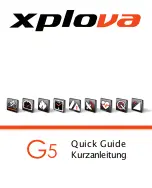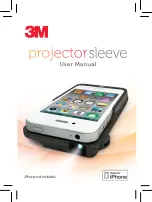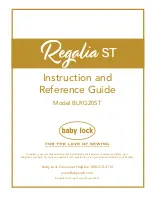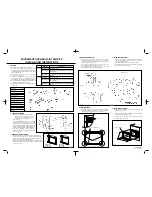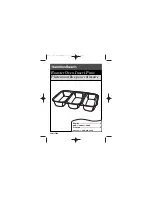
TIENet™ 360 LaserFlow™ Velocity Sensor
Section 1 Introduction
1-2
Figure 1-1 Basic LaserFlow system (showing both AC and battery-powered options)
1.2 Design
The LaserFlow sensor consists of a housing with two mea-
surement technologies working together.
1.2.1 Measurement
Technology
The
laser velocimeter
has a laser diode that serves as both
t r a n s m i t t e r a n d r e c e i v e r o f a l a s e r l i g h t b e a m . T h e
Doppler-shifted signal frequency is used to determine flow
stream velocity.
The
ultrasonic level transducer
determines the stream’s level
by emitting an ultrasonic pulse and measuring the time it takes
for the echo to return from the stream’s surface. The transducer
is both pulse transmitter and echo receiver.
1.2.2 Cabling
The LaserFlow sensor is available with a 10m or 23m standard
length cable. Custom cable length is also available. For greater
distances, external connection via conduit, and connection of
additional TIENet™ devices, the TIENet™ Expansion Box is
available.
Distance can be increased by installing the TIENet™ Expansion
Box closer to the installed sensor and adding a custom-length
TIENet™ cable between the box and the Signature® flow meter.
The maximum recommended distance between the LaserFlow
and the Signature® flow meter is 45.7 meters (150 feet). The
maximum recommended distance between the LaserFlow and
the 2160 LaserFlow module is 22.9 meters (75 feet).
1.3 Operation
The
laser velocimeter
uses a laser beam to generate a source
frequency light, which is focused at points below the surface of
the flow stream. The light is scattered back to the laser. The
returned light is frequency shifted due to the Doppler effect and
the motion of the flow. The lens that focused the laser light below
the surface of the flow stream now focuses the returned light
back into the laser. The source light and shifted light frequencies
are mixed to determine a Doppler shift, which is then used to cal-
culate flow stream velocity.
The LaserFlow is able to move the laser beam transverse to the
flow in order to obtain readings at multiple points in the flow,
with automatic compensation to maintain precise focus at all
times.
The
ultrasonic level transducer
emits multiple ultrasonic
pulses per second. Between pulses, the transducer switches from
transmitter to receiver. When the transducer receives the echo
from the water’s surface, the sound energy is converted into an
electrical signal. The signal is then amplified and processed by
the flow meter into an “echo-received” signal. The time between
the transmitted pulse and the echo-received signal is propor-
tional to the distance between the transducer and the liquid
surface, which is then translated into a level reading. Because
the speed of the pulse through the air varies with temperature,
compensation is built-in. A temperature sensor inside the
Summary of Contents for TIENet 360 LaserFlow Ex
Page 2: ......
Page 4: ......
Page 10: ...TIENet 360 LaserFlow Velocity Sensor Safety viii ...
Page 54: ...TIENet 360 LaserFlow Velocity Sensor Section 2 Preparation and Installation 2 32 ...
Page 90: ...TIENet 360 LaserFlow Velocity Sensor Section 4 Setup with 2160 LaserFlow Module 4 20 ...
Page 102: ...TIENet 360 LaserFlow Velocity Sensor Appendix A Replacement Parts A 2 A 2 LaserFlow Sensor ...
Page 103: ...TIENet 360 LaserFlow Velocity Sensor Appendix A Replacement Parts A 3 ...
Page 104: ...TIENet 360 LaserFlow Velocity Sensor Appendix A Replacement Parts A 4 ...
Page 105: ...TIENet 360 LaserFlow Velocity Sensor Appendix A Replacement Parts A 5 ...
Page 106: ...TIENet 360 LaserFlow Velocity Sensor Appendix A Replacement Parts A 6 ...
Page 107: ...TIENet 360 LaserFlow Velocity Sensor Appendix A Replacement Parts A 7 ...
Page 109: ...TIENet 360 LaserFlow Velocity Sensor Appendix A Replacement Parts A 9 ...
Page 111: ...TIENet 360 LaserFlow Velocity Sensor Appendix A Replacement Parts A 11 ...
Page 132: ...TIENet 360 LaserFlow Velocity Sensor D 6 ...
Page 136: ......
Page 138: ...Warranty ...
Page 140: ......































